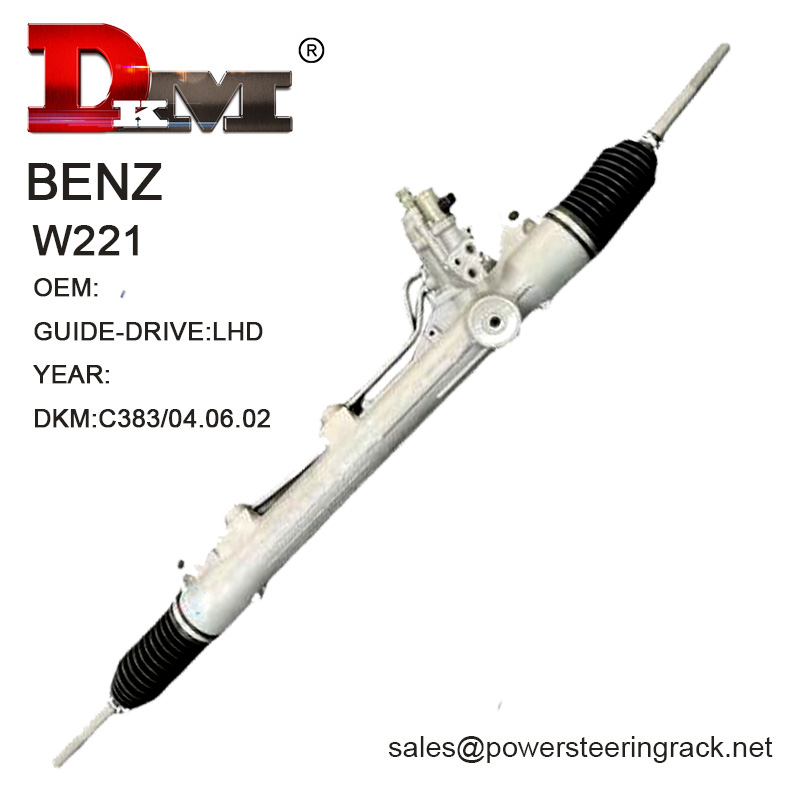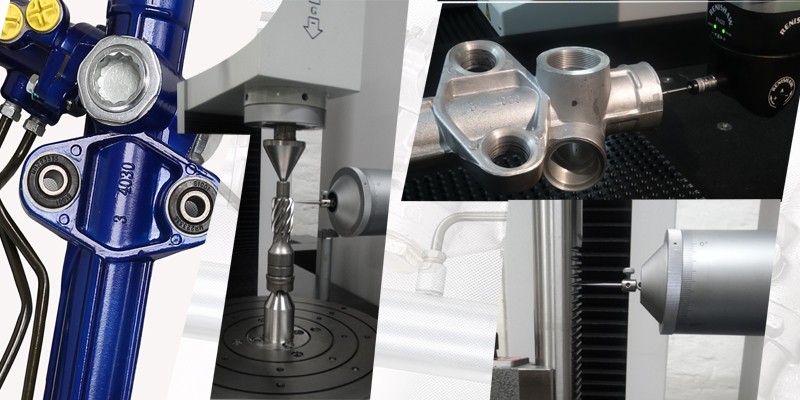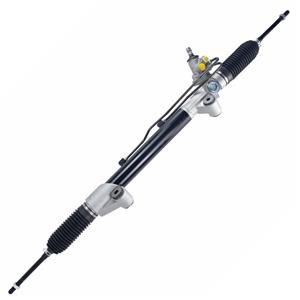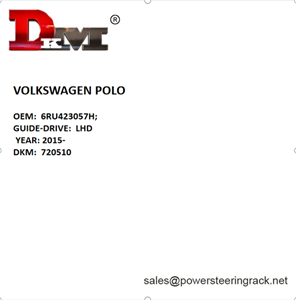Why isn't my Mercedes power steering working?
As a world-famous luxury car brand, Mercedes-Benz is known for its excellent performance and reliability. But even so, the power steering system may occasionally malfunction, causing driving inconvenience. When your Mercedes has an issue with the power steering not working, it's usually due to a number of reasons. Everything from a simple low hydraulic oil level to a complex mechanical failure can cause this problem.
This article will provide an in-depth analysis of how the power steering system works, the causes of common problems, and how to troubleshoot and solve these problems.

How does the power steering system work?
Power steering systems are designed to reduce the force required by the driver to turn the steering wheel, making the vehicle easier to maneuver at low speeds and when parking. There are usually two main types of Mercedes-Benz power steering systems: Hydraulic Power Steering (HPS) and Electric Power Steering (EPS). They provide assistance in different ways, but have the same purpose, which is to improve driving comfort.
1. Hydraulic power steering system: This system relies on hydraulic oil to provide steering assistance. The hydraulic pump is driven by the engine, and the hydraulic oil is forced through the pipeline to the steering rack or steering gear, providing additional steering force to help the driver easily control the vehicle.
2. Electric Power Steering: Unlike hydraulic systems, EPS uses an electric motor to provide steering assistance. The electronic control unit (ECU) adjusts the power assist according to the vehicle's speed, steering angle and other information to further improve steering accuracy and response speed.
Whether it is a hydraulic system or an electric system, once the power steering does not work, the driver will feel laborious when turning the steering wheel, especially at low speeds or when parking.

Why isn't my Mercedes power steering working?
Failure of the Mercedes-Benz power steering system may be caused by a variety of reasons, including hydraulic pump failure, hydraulic oil leakage, loose belts, electrical failures, damage to internal components of the steering system, etc.
Insufficient or leaking hydraulic oil
In the hydraulic power steering system, hydraulic oil plays a vital role. If the hydraulic oil level is insufficient or there is oil leakage, the system will not be able to provide normal assistance. In this case, the steering assistance will be reduced or even completely lost. Common sources of hydraulic oil leaks include:
● Hydraulic oil pump: An aged or worn hydraulic oil pump may not be able to provide sufficient pressure, resulting in insufficient steering assist.
● Hydraulic lines: The pipes or hoses connecting the hydraulic pump and the steering rack may be cracked or damaged, causing hydraulic oil to leak.
● Damaged sealing rings: Once the seals of the steering rack and hydraulic pump are aged or broken, hydraulic oil will leak out from these components, resulting in a reduction in hydraulic oil volume.
Belt is loose or broken
For Mercedes-Benz models with hydraulic power steering systems, the belt is an important component that drives the hydraulic pump. If the belt is loose or broken, the hydraulic pump will not work properly, causing the steering assist to disappear. Worn or loose belts can be caused by prolonged use, especially if the vehicle has been driven for a long time. This problem is particularly common.
Hydraulic pump failure
The hydraulic pump is the core component of the hydraulic power steering system, which provides power assistance by pressurizing hydraulic oil. If the hydraulic pump fails, such as internal wear or insufficient pressure, the hydraulic system will not work effectively. This usually manifests as a weakening or even complete loss of steering assist.
Electric power assist system failure
For Mercedes-Benz models equipped with electric power steering (EPS), if there is a problem with the steering system, it is usually related to the electrical system. Here are some common causes of electric power steering failure:
● Sensor failure: When components such as the steering angle sensor and speed sensor fail, the system cannot accurately adjust the power assist, causing the steering system to work abnormally.
● Motor failure: The EPS system relies on the electric motor to provide power assistance. If the motor is damaged or there is a problem with the control circuit, the steering power assist will not work properly.
● ECU problem: The electronic control unit is responsible for receiving and processing sensor information. If the ECU fails, the system will not be able to adjust the steering assist according to vehicle conditions.
Damaged steering rack or mechanical component
If the steering rack or other mechanical components are damaged, the physical transmission portion of the steering system will be affected. For example, wear on the steering rack can cause the system to jam, making it difficult for the driver to turn the steering wheel. This type of malfunction is usually accompanied by unusual noises, such as a clicking or grinding sound when turning the steering wheel.
Steering fluid quality issues
The quality of steering fluid is critical to the operation of a hydraulic power steering system. If the steering fluid is contaminated, or if an unsuitable fluid is used, it will affect the normal operation of the system. For example, using inferior hydraulic oil or transmission oil instead of special steering fluid will cause carbon deposits and impurities inside the hydraulic system, ultimately affecting the performance of the hydraulic pump and rack.

How to troubleshoot Mercedes-Benz power steering system?
When your Mercedes power steering system fails, you can take the following steps to troubleshoot the source of the problem:
Check hydraulic oil level
First, open the hood and check the power steering fluid level. If the fluid level is below the specified standard line, there may be a leak or hydraulic oil consumption problem. You can test whether power steering assistance can be restored by adding an appropriate amount of hydraulic fluid, but this is only a short-term solution. If the hydraulic oil level continues to drop, there is a leak and further inspection and repair is required.
Check belt condition
For hydraulic power steering systems, check the belt for tightness and wear. If the belt is loose or obviously worn, it should be replaced in time. If the belt breaks, the hydraulic pump will stop working completely, and the belt will need to be replaced to restore normal steering assistance.
listen to noise
Do you hear unusual noises when turning the steering wheel? When a hydraulic power steering system fails, it is usually accompanied by a grinding, clicking, or growling sound. When the electric power assist system fails, you may not hear any mechanical noise, but you will feel that the steering is unusually stiff when driving.
Check electrical system
If your Mercedes-Benz is equipped with an electric power steering system, you can determine the fault point by checking the fuse, sensor connecting wire and the motor for voltage abnormalities. In addition, using OBD diagnostic tools to read the vehicle's fault codes is also one of the effective troubleshooting methods.
How to repair Mercedes-Benz power steering system failure?
Depending on the cause of the failure, there are different ways to repair your power steering system. Here are a few common solutions:
Change hydraulic oil or repair leaks
If hydraulic oil leaks, you first need to find the leak point and repair it. Worn lines, seals or hydraulic pumps often need to be replaced. Once the repair is complete, refill the hydraulic oil and check the fluid level according to the Mercedes-Benz manufacturer's recommended specifications.
Replace belt
A worn or broken belt is a common cause of power steering system failure in Mercedes-Benz. Replacing a new belt can effectively restore the working condition of the hydraulic pump, thus solving the problem of steering failure.
Repair or replace hydraulic pump
If the hydraulic pump itself fails, repair usually involves replacing internal components or seals. In severe cases, the entire hydraulic pump may need to be replaced.
Overhaul electric power steering system
For electric power assist system failures, normal functionality can be restored by replacing the faulty sensor, repairing the motor or ECU. It is generally recommended that professional Mercedes-Benz maintenance personnel test the electrical system through diagnostic tools to ensure that the problem is accurately resolved.

What are the consequences of ignoring power steering failure?
If there is a problem with the power steering system and it is not repaired in time, the driver will face greater safety risks during daily driving. Here are the possible consequences of ignoring power steering system failure:
● Increased driving difficulty: When the steering assist disappears, the driver needs more effort to turn the steering wheel, especially when driving at low speeds or parking. This not only increases driving fatigue, but may also lead to improper vehicle handling.
● Further damage to the system: If the hydraulic system leaks oil and is not repaired in time, the hydraulic pump and other related components may be damaged due to lack of lubrication, further increasing repair costs.
● Potential safety hazards: When driving at high speed, the failure of power steering may cause the vehicle direction to be uncontrolled, increasing the risk of traffic accidents.




